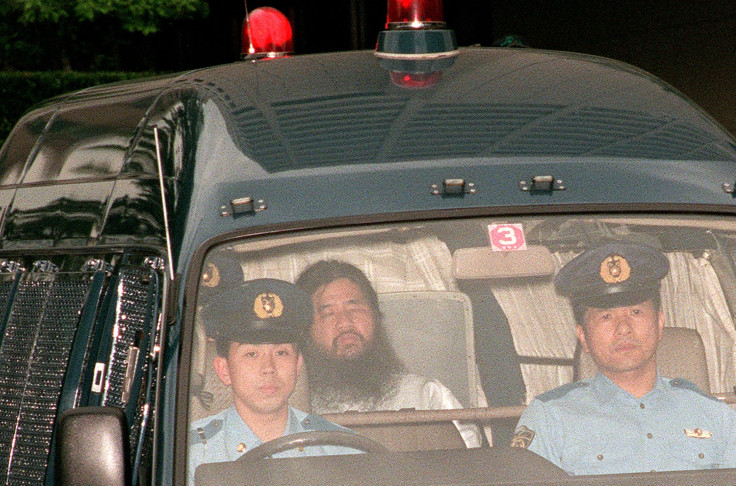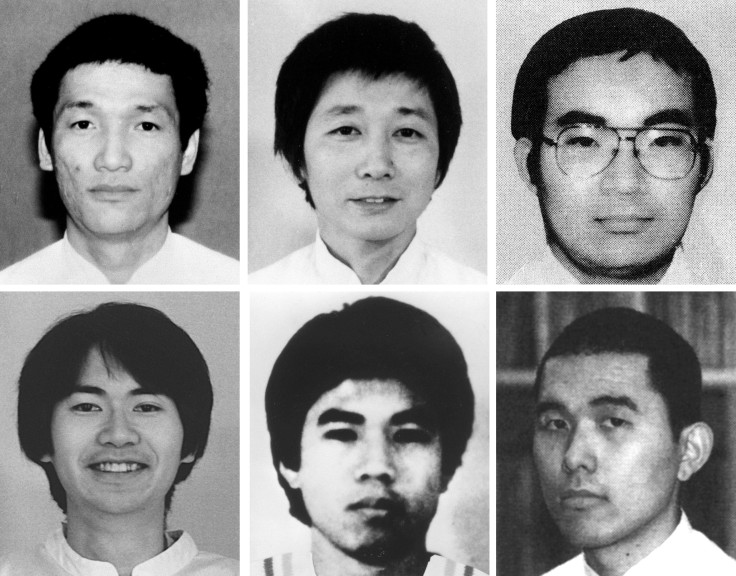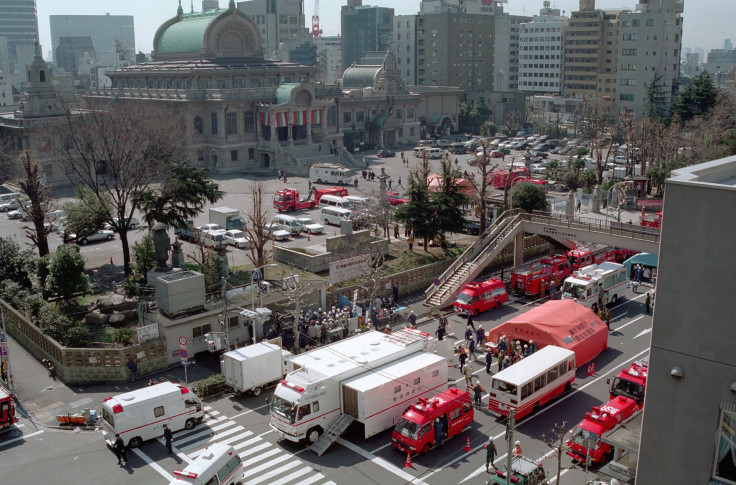Japan Executes Last 6 Aum Shinrikyo Members Involved In Tokyo Sarin Attack

Japan’s Justice Minister Yoko Kamikawa confirmed Thursday six remaining members of the Japanese Doomsday cult Aum Shinrikyo, which was involved in a series of crimes in the 1990s, were executed.
Their most infamous attack was the release of sarin gas on the Tokyo subway system in March, 1995, which led to the death of 13 people. More than 6,000 were injured during the attack. Sarin gas is a nerve agent which disrupts the connection of nerves to organs.

Among the six members who were executed Thursday were Kazuaki Okazaki, who was one of the earliest members of the group. He was involved in the murder of a lawyer and his family, including a baby, and that of a fellow cult member Masato Yokoyama, who was involved in the sarin gas attack in Tokyo. Okazaki was also involved in the illegal manufacturing of automatic rifles.
The other members who were executed include Satoru Hashimoto, who was held responsible for 10 killings as well as being part of the sarin gas attack; Yasuo Hayashi, who took part in the sarin attacks in Tokyo and in central Japan; Toru Toyoda, who researched and produced weapons and chemicals for the cult and was also involved in the gas attack; and Kenichi Hirose, who worked on building up an arsenal for the cult, and was one of the followers who released the nerve agent.
"It was unprecedented level of extreme and serious crimes which must not happen again and terrified not only people in Japan but also foreign countries and shook the society," Kamikawa said. "I ordered executions based on extreme careful consideration."

Earlier this month, the other seven remaining members, including cult leader Shoko Asahara, were executed July 6. Asahara, whose real name is Chizuo Matsumoto, had been in prison for 22 years before being executed.
The members of the cult were arrested months after the 1995 sarin gas attack after police conducted raids in hundreds of locations all over the country. Asahara was arrested in May 1995.

Though Asahara had been sentenced to death in 2006, the court proceedings of the other 12 accused members of the cult dragged on for over a decade more. The last of the sentences was finalised in January, which finally led to the execution of the members.
The cult group Aum Shinrikyo or Aum Supreme Truth was founded in 1984. They mixed Buddhist and Hindu meditation with apocalyptic teachings. The group, envisioning the overthrow of the government, accumulated a large arsenal of chemical, biological and conventional weapons for the same.
At one point, they claimed they had over 10,000 followers in Japan and 30,000 in Russia. After they were arrested and tried in Japan, the group disbanded. But nearly 2,000 people still follow their rituals in splinter groups monitored by authorities, reported Reuters.
Japan has never executed so many people in one month, Kamikawa said.
The Asian country, along with the United States, is the only two members of the Group of Seven advanced democracies that still executes prisoners. The prisoners with death sentences are executed by hanging.
In Japan, the death penalty is carried out by hanging. The prisoner is only notified about an hour before, and family only find out after.
— VICE News (@VICENews) July 23, 2018
So Rika Matsumoto knew that any day, her father, cult leader Shoko Asahara, could be gone. We were there the day before.
(via @HBO) pic.twitter.com/aWQ3QJY56Z
The United Nations’ Committee against Torture has criticised Japan for the psychological strain it puts on inmates and their families as the prisoners are only notified of their execution on the morning when it is supposed to happen, usually an hour before.
Around 24 people were executed between 2012 and 2016, according Reuters. Kamikawa was the minister who has ordered the most execution — 16—after Japan lifted its 40-month ban on death penalty in 1993.
The hangings are announced later, as they are done in secret with only prison officials and a priest present.
Japan has received international and internal criticism for its policy of death penalty. But a poll taken a few years ago showed 80 percent still supported the punishment, NHK World Japan reported.
"The attacks carried out by Aum were despicable and those responsible deserve to be punished. However, the death penalty is never the answer," Hiroka Shoji, East Asia researcher at Amnesty International said, "Justice demands accountability but also respect for everyone's human rights. The death penalty can never deliver this as it is the ultimate denial of human rights."
© Copyright IBTimes 2025. All rights reserved.





















